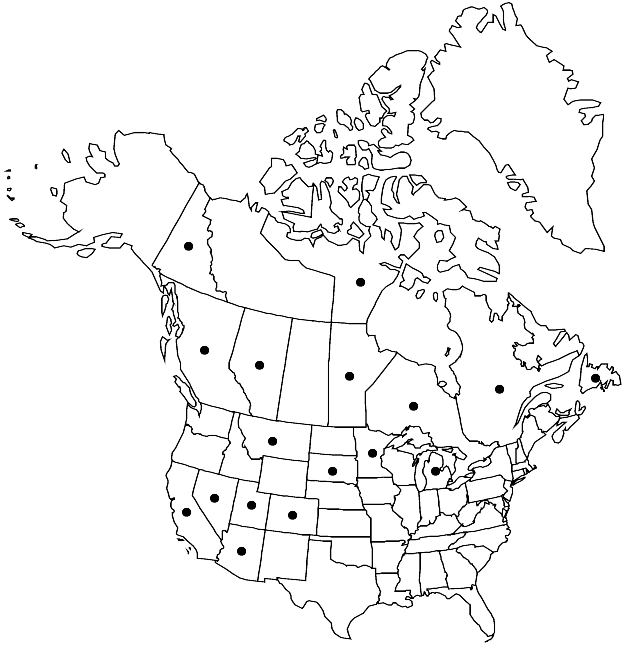Orthotrichum pallens
Bryol. Univ. 1: 788. 1827.
Plants 0.3–1 cm. Stem leaves loosely erect-appressed and slightly incurved when dry, oblong-lanceolate to broadly lanceolate, 1.6–3 mm; margins recurved to near apex, entire or crenulate at apex; apex narrowly obtuse, acute, or apiculate; basal laminal cells rectangular, walls thin, not nodose; distal cells 9–14 µm, 1-stratose, papillae 2 or rarely 3 per cell, conic, low. Specialized asexual reproduction occasional, by gemmae on leaves. Sexual condition cladautoicous. Seta 0.5–1.5 mm. Capsule emergent to barely exserted, oblong to oblong-cylindric, 1–2.5 mm, strongly 8-ribbed, narrowly cylindric and contracted along entire length when old; stomata immersed, to 1/2 covered by subsidiary cells, cells not projecting, inner walls not much thickened; peristome double; prostome absent; exostome teeth 8, erect, reflexed or recurved-reflexed with age, finely papillose, densely papillose, or papillose-striate; endostome segments 8 or 16, well developed, of 1 or 2 rows of cells, smooth or finely papillose. Calyptra conic-oblong, smooth, naked or sparsely hairy, hairs smooth. Spores 10–20 µm.
Distribution

North America, Mexico, Europe.
Discussion
Varieties 9 (3 in the flora).
Orthotrichum pallens is distinguished by the immersed stomata that are scarcely covered by thin-walled subsidiary cells. The peristome is double with a well-developed endostome of 16 (or eight) segments that remains intact until the capsule is quite old. Gametophytically, O. pallens is distinguished by narrowly obtuse, oblong-lanceolate leaves, and an autoicous sexual condition.
Selected References
None.
Lower Taxa
Key
| 1 | Leaf margins crenulate at apex. | Orthotrichum pallens var. crenulatum |
| 1 | Leaf margins entire | > 2 |
| 2 | Endostome segments 16; calyptrae naked; sporadic throughout North America. | Orthotrichum pallens var. pallens |
| 2 | Endostome segments 8; calyptrae sparsely hairy; Arizona. | Orthotrichum pallens var. johnseniae |